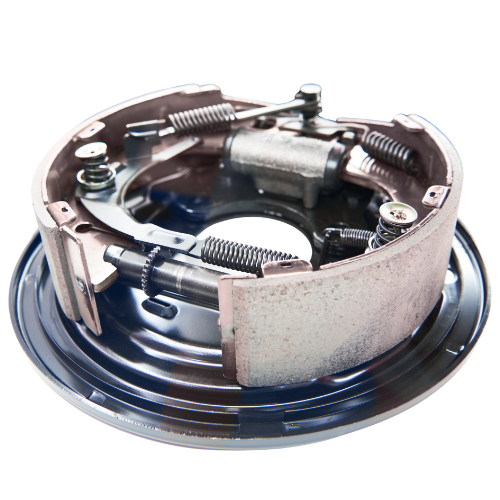Explore the four key components that make up a truck’s brake system—engineered to ensure safe, reliable, and powerful stopping performance on every road.

Each part has a unique role in the braking process, and understanding how they function can help fleet managers and vehicle operators maintain better safety, performance, and longevity for their vehicles. This article explores these essential components, their functions, maintenance needs, and what to consider when selecting quality truck brake parts for heavy-duty applications.
Brake chambers play a pivotal role in pneumatic brake systems, especially in commercial trucks and buses. They convert air pressure from the braking system into mechanical force, allowing the brake shoes to press against the drum and create the friction necessary to stop the vehicle.
When the driver presses the brake pedal, compressed air flows into the brake chamber, pushing a diaphragm that drives the push rod outward. The push rod then moves the brake shoes against the drum, producing the friction required to decelerate the vehicle.
There are two main types of brake chambers:
To ensure optimal performance, brake chambers should be regularly inspected for any signs of wear or air leakage. Replacing worn brake chambers promptly prevents more serious brake failures and reduces the risk of costly repairs.
Brake linings are friction materials attached to the brake shoes, and they directly contact the brake drum during braking. These linings are typically made from high-strength materials designed to withstand intense heat and friction generated during braking.
When the brake shoes press against the drum, the brake linings create friction, which slows down or stops the vehicle. This friction generates a significant amount of heat, and brake linings must be durable enough to handle repeated exposure to these extreme conditions without degrading.
Brake linings are often made from a combination of materials, such as:
Brake linings should be regularly checked for thickness and signs of wear. As linings wear down, their braking performance decreases, so timely replacement is crucial for maintaining braking efficiency and safety.
Brake shoes are curved, metal components that house the brake linings. In a drum brake system, the brake shoes press against the inside of the brake drum to create the necessary friction to slow the vehicle. Brake shoes are common in commercial vehicles due to their durability and suitability for heavy-duty applications.
When the brake chamber pushes the push rod outward, it forces the brake shoes to expand against the inner surface of the brake drum. The brake linings on the shoes then create friction against the drum, converting the vehicle’s kinetic energy into heat and bringing it to a stop.
Brake shoes can vary based on their material, design, and specific application. Heavy-duty brake shoes for commercial vehicles are typically reinforced to withstand the increased weight and braking force required for larger vehicles.
Brake shoes should be inspected for wear and alignment during routine maintenance. If the shoes become misaligned or excessively worn, they can cause uneven wear on the brake linings, compromising braking performance and necessitating earlier replacements.
For commercial vehicle operators, choosing high-quality brake chambers, brake linings, and brake shoes is essential for maintaining safety, performance, and operational efficiency. Here are some key considerations:
Brake chambers, brake linings, and brake shoes are fundamental components of a commercial vehicle’s brake system. Understanding the functions and maintenance needs of each component can help fleet managers and vehicle operators ensure safety, reduce costs, and improve vehicle uptime.
Investing in high-quality, durable brake components not only enhances braking performance but also contributes to the safety of the driver and other road users. By keeping up with regular maintenance and choosing the right parts, commercial vehicle operators can enjoy reliable, efficient braking performance over the long term.